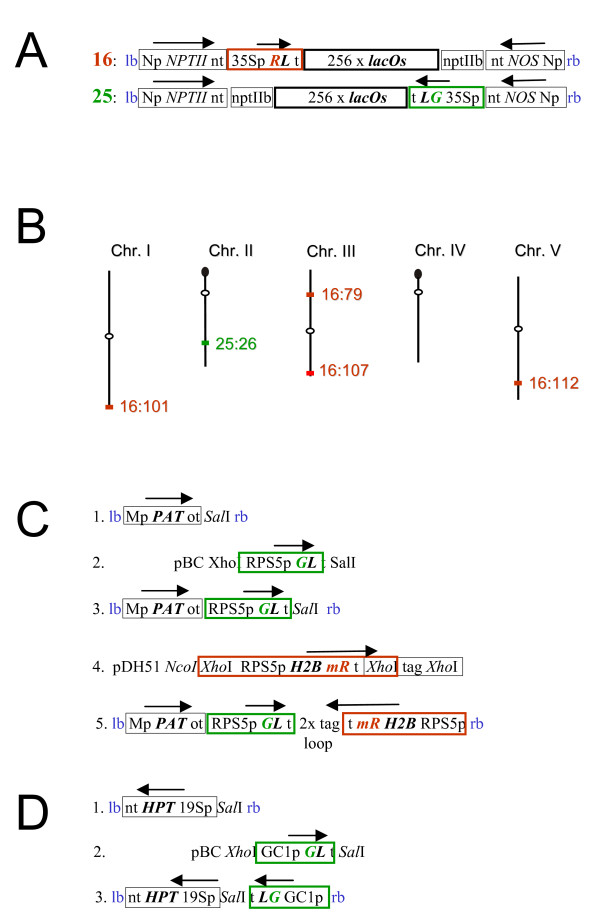Figure 1.
Constructs and chromosomal locations of fluorescent-tagged sites. A. T-DNA constructs for fluorescent tagging. Construct 16 is based on red fluorescent protein (R). Construct 25 is based on enhanced green fluorescence protein (G). Both constructs use the lacOs and the LacI (L) fused to R and G. Genes encoding RL and GL are under the control of the 35S promoter of CaMV (35Sp). B. Chromosomal positions of tagged sites. The insertion sites have been reported previously [8,11]. Lines are named according to the construct used (16 or 25) followed by the line number (26, 79, 101, 107, 112). C. Constructs containing the RPS5 promoter to drive expression of genes encoding the EGFP-LacI fusion protein (GL) and histone H2B fused to monomeric DsRed (H2BmR). D. Constructs containing the GC1 promoter to drive expression of GL. Details of construct assembly using the modules shown in C and D are in the Methods section. Gene units are boxed; heavy outlines indicate genes encoding fluorescent fusion proteins (red, green) and lacOs (black). Arrows indicate the directions of transcription. Additional abbreviations: lb, T-DNA left border; rb, T-DNA right border; Np, NOS promoter; red 'R', DsRed2; green 'G', EGFP; t, transcriptional terminator from the 35S transcript of CaMV; nptIIb, neomycin phosphotransferase II for selection of bacteria on kanamycin; nt, NOS terminator; Mp, mannopine synthase promoter; ot, octopine synthase terminator; tag, 300 bp filler sequence; 19Sp, 19S promoter of CaMV; pDH51, pUC18 containing the 35S promoter-35S terminator cassette [33]; pBC, Bluescript plasmid encoding chloramphenicol resistance.

